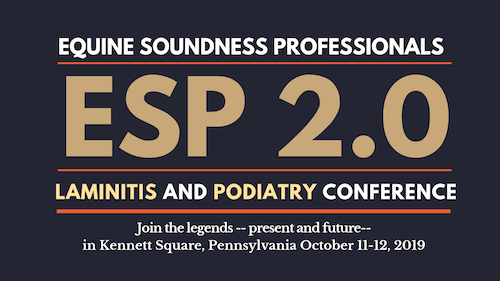"Managing your laminitic and minimising his pain">Managing Your Laminitic (Horse) and Minimising His Pain" is the third in a series of feature presentations designed to help horse owners recognize the signs of laminitis in horses and to work toward preventing laminitis. In this video, laminitis researcher
Catherine McGowan, currently at the University of Liverpool in Great Britain, talks about the tools that a farrier uses to help a horse and relief the physical foot pain caused by laminitis, as well as the pros and cons of medications like Bute for pain control.
The farrier who briefed McGowan is Ian Hughes, farrier at the University of Liverpool equine hospital. He's pretty shy about publicity, in spite of my best efforts.
Learn more about University of Liverpool farrier lecturer
Ian Hughes and his role as
chief farrier for the 2008 Olympics in Hong Kong. This nice photo of Ian (left) at work with his Vettec gun is from the portfolio of
Hot Shots Photography.
These videos were filmed at a laminitis awareness seminar organized by
World Horse Welfare and British feed company
Dodson and Horrell earlier this year. More videos from the series will be posted on the
Hoof Blog in the next few days.
The conferences, which were held at leading UK veterinary universities, were organized by Dr Teresa Hollands, Senior Nutritionist at Dodson and Horrell. Featured specialists included Professor Derek Knottenbelt, Dr Cathy McGowan and Alex Dugdale from the University of Liverpool, David Catlow from Oakhill Veterinary Centre and Samantha Lewis from World Horse Welfare, among many others.
The videos in this series include “The Horse’s Foot and How it Goes Wrong” (Professor Knottenbelt,) “Managing your Laminitic and Minimizing his Pain” (Dr McGowan,) “Recognizing the Early Signs of Laminitis” (David Catlow,) “Using Ultrasound to show the Difference Between Fat and Muscle” (Alex Dugdale,) and “How to Fat Score a Horse” (Samantha Lewis.)
To learn more: Watch Part 1 of the series, "
The Horse's Foot and How It Goes Wrong" and then go on to Part 2, "
Recognizing the Early Signs of Laminitis”.
A partial list of Catherine McGowan's research is available on the
National Library of Australia's scientific database website.
 © Fran Jurga and Hoofcare Publishing; Fran Jurga's Hoof Blog is a between-issues news service for subscribers to Hoofcare and Lameness Journal. Please, no use without permission. You only need to ask. This blog may be read online at the blog page, checked via RSS feed, or received via a digest-type email (requires signup in box at top right of blog page). To subscribe to Hoofcare and Lameness (the journal), please visit the main site, www.hoofcare.com, where many educational products and media related to equine lameness and hoof science can be found. Questions or problems with this blog? Send email to blog@hoofcare.com.
© Fran Jurga and Hoofcare Publishing; Fran Jurga's Hoof Blog is a between-issues news service for subscribers to Hoofcare and Lameness Journal. Please, no use without permission. You only need to ask. This blog may be read online at the blog page, checked via RSS feed, or received via a digest-type email (requires signup in box at top right of blog page). To subscribe to Hoofcare and Lameness (the journal), please visit the main site, www.hoofcare.com, where many educational products and media related to equine lameness and hoof science can be found. Questions or problems with this blog? Send email to blog@hoofcare.com.





